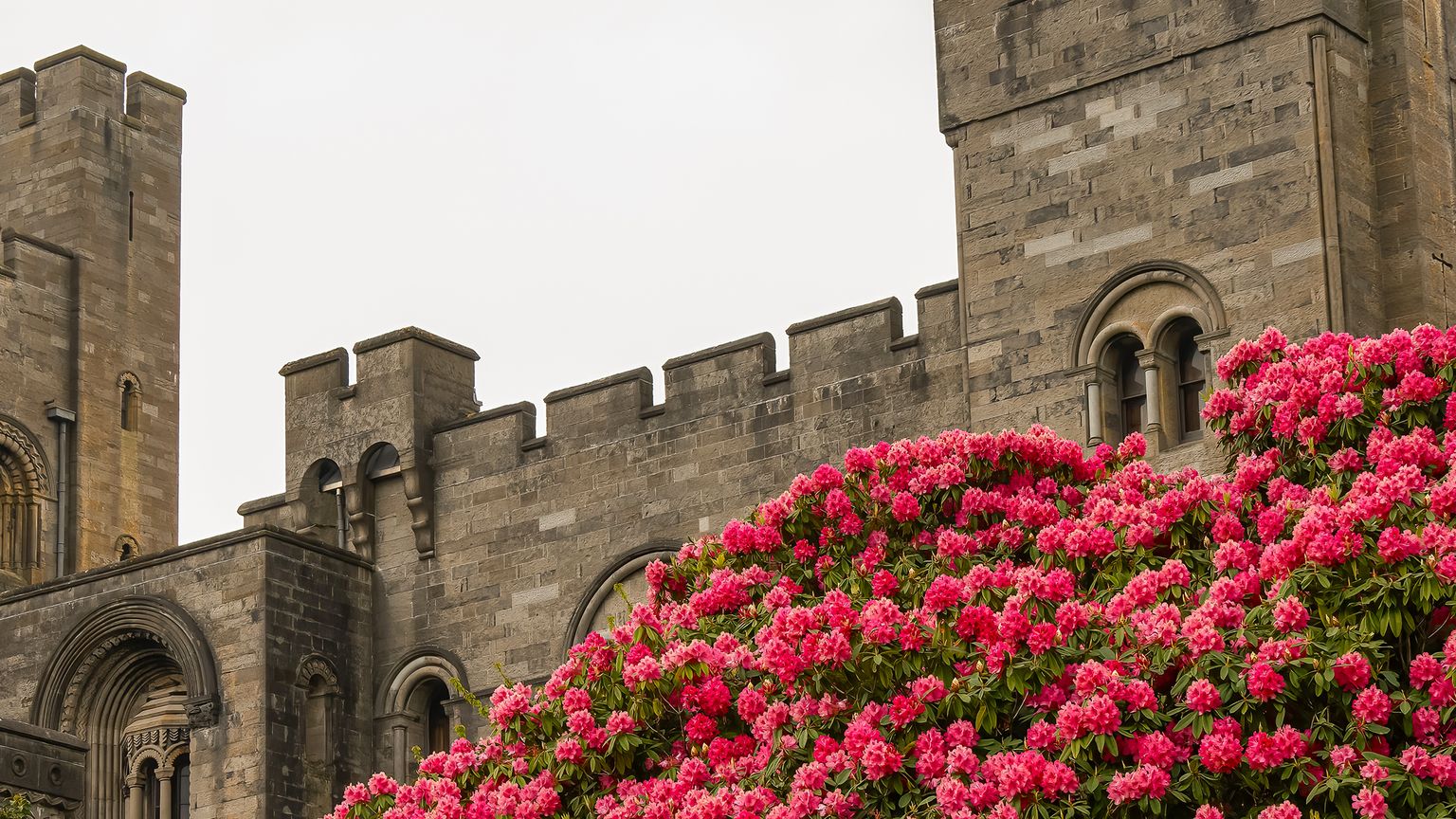
Christ the Redeemer: 12 facts about Brazil’s beloved monument
Rio de Janeiro offers a kaleidoscopic array of raucous energy, colorful festivities, soaring landscapes, and welcoming hospitality. The dynamic city on Brazil’s southeastern coast is known for many things—its gorgeous beaches, legendary Carnival, and the iconic, towering statue of Jesus known as Christ the Redeemer, or Cristo Redentor in Portuguese. The statue stands 98 feet tall with arms spanning 92 feet and sits on a 26-foot-high pedestal. To fully grasp its size and scope, you have to see it in person. When you join us on one of our Brazil tours, you’ll get an up-close look at the famous Rio de Janeiro statue, but before you leave, here are a few interesting facts about Rio’s beloved symbol of hope.

1. The statue was conceived decades before it was constructed
In the 1850s, priest Pedro Maria Boss proposed that a Catholic monument be erected to honor Princess Isabel of Brazil. The idea was shelved until 1921, when the Catholic church became concerned that it was losing the support of Brazilian citizens. The idea was re-proposed, and construction began in 1922. It was completed in 1931.

2. The statue’s head and hands were sculpted in France
The statue of Jesus in Brazil was a collaboration between several international artists and engineers. It was designed by Brazilian engineer Heitor da Silva Costa, who constructed it along with French engineer Albert Caquot. French-Polish sculptor Paul Landowski carved Christ the Redeemer’s head and hands from clay at his studio in France and had them shipped to Rio along with a 12-foot scale model of the body. The statue was then cast in reinforced concrete and reconstructed on site. Romanian sculptor Gheorghe Leonida was responsible for carving the statue’s face.
3. It was funded almost entirely by donations from the Brazilian people
If there’s one thing the people of Rio are good at, it’s coming together for a shared cause—just look at how Carnival is celebrated in the city each year. Christ the Redeemer’s construction cost around $250,000—the equivalent of $3.4 million today—and was funded almost entirely by the local Catholic community.
4. The original design was different
In Da Silva Costa’s original design, Christ was carrying a cross in one hand and a globe in the other. The design was initially approved but later changed to be more open and welcoming, resulting in the iconic figure with arms outstretched that we see today. The awe-inspiring statue is the largest Art Deco sculpture in the world. “Pictures can’t begin to show what feelings are experienced when standing at the foot of Christ the Redeemer in Rio,” said traveler Barbara after visiting on our Grand Tour of South America: Brazil, Argentina & Peru.
5. There are passageways inside
To be strong enough to support the open-armed design, the statue was constructed from reinforced concrete. There are stairs and passageways within the statue, though they’re not open to the public. These passages allow workers to enter through a door at the statue’s base and climb the 12 stories of steel stairs that pass under the web of crisscrossed concrete supports within. Trapdoors in the arms and head of the statue allow workers outside access, and much of their restoration work must be done while perched on the exterior of the statue, tethered with ropes.

6. It’s one of the New Seven Wonders of the World
In 2007, Rio’s Christ the Redeemer statue was declared one of the New Seven Wonders of the World along with the Great Wall of China, the Taj Mahal, Machu Picchu, Petra, Chichén Itzá, and the Colosseum. The winners were voted on by more than 100 million people and narrowed down from a group of 21 semi-finalists—they beat iconic sites like Stonehenge, the Alhambra, and the Eiffel Tower. If you want to knock a few world wonders off your bucket list, join us on our Grand Tour of South America: Brazil, Argentina & Peru to see Christ the Redeemer and Machu Picchu all on one trip. “It was breathtaking to see two of the New Seven Wonders of the World, Christ the Redeemer Statue in Brazil, and Machu Picchu in Peru,” said traveler Lydia after taking the tour.

7. It’s located within a national park
The iconic Brazil Jesus statue is situated on top of Corcovado Mountain within Tijuca National Park—a UNESCO Biosphere Reserve and one of the largest urban rainforests in the world. A visit to Christ the Redeemer is our top must-have experience in Rio, and when you join one of our Brazil tours, you’ll discover lush flora, diverse fauna, natural pools, and impressive waterfalls in the areas surrounding the mountaintop statue. “Seeing the magnificent waterfalls and Christ the Redeemer statue were the highlights of the tour,” said traveler Arthur of our Rio, Iguazú Falls & Buenos Aires tour.
8. It’s frequently struck by lighting
Christ the Redeemer is struck by lightning an average of three to six times per year. Its location on a mountaintop within a rainforest makes it particularly susceptible to strikes. In 2014, a lightning strike damaged a few of the statue’s fingers and its head, prompting more lighting rods to be added to the statue’s head and arms. On average, it takes more than a million dollars per year to maintain the statue, and past repairs have soared to several times that.
9. The statue gets darker each time it’s restored
If you’ve previously visited Rio on one of our Brazil tours and are planning on joining us on our brand-new Brazil: Rio De Janeiro, Paraty & São Paulo tour, you may notice that parts of the statue are a slightly different color than before. The statue is covered in millions of locally sourced, triangular soapstone tiles that female volunteers applied by hand. Some of the women even wrote messages or the names of loved ones on the backs of the tiles. The original soapstone tile was sourced specifically for its light color, but the quarry it came from has since run dry. Repairs are still made using soapstone, but it’s slightly darker in color.
10. There’s a chapel in the base of the statue
In 2006, a small chapel was erected within the hollow pedestal of the statue. It’s dedicated to Our Lady of Aparecida, the patron saint of Brazil. The chapel is often closed to the public but is open for Sunday mass each weekend, so depending on the timing of your tour of Rio, you might have an opportunity to peek inside. The chapel can also be booked for weddings and baptisms.
11. It’s only the fifth-largest Jesus statue in the world
In fact, Rio’s Christ the Redeemer isn’t even the tallest Jesus statue in Brazil. Christ the Protector in Encantado, Brazil, stands about 20 feet taller than Rio’s statue. The official title of tallest Jesus statue in the world is somewhat contested, but it goes to either Poland’s Christ the King (if you’re measuring from the base) or Indonesia’s Jesus Buntu Burake (if measuring without the base).

12. You can now take an elevator to the foot of the statue
Up until 2003, the final leg of the journey to view Christ the Redeemer up close would require travelers to climb 220 stairs. Now, however, after you ride the cogwheel train to the peak of Corcovado Mountain on one of our Brazil tours, you’ll have the option to take an elevator and escalator the final stretch of the way. The trip is scenic and offers panoramic views of the surrounding forest, city, and shoreline (including one of the must-see beaches of the world). Traveler Kathy listed “an amazing cogwheel train ride to stand next to the statue of Christ the Redeemer” among her favorite parts of our Grand Tour of South America: Brazil, Argentina & Peru.



)
























